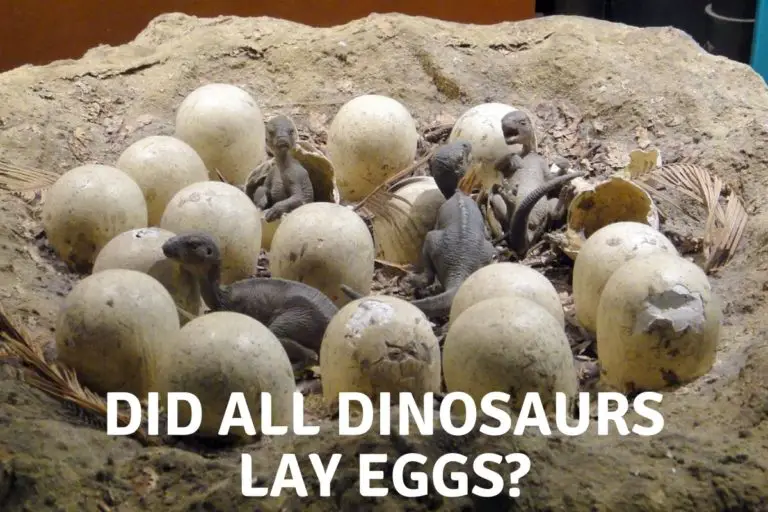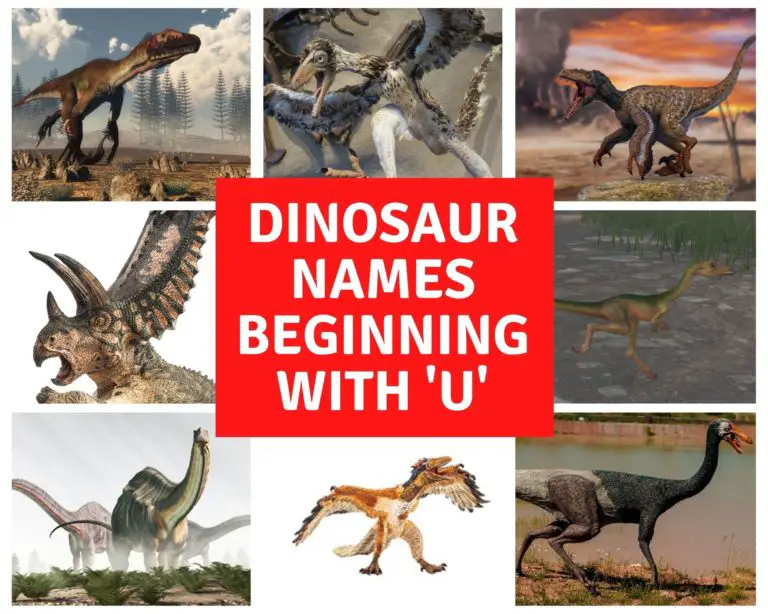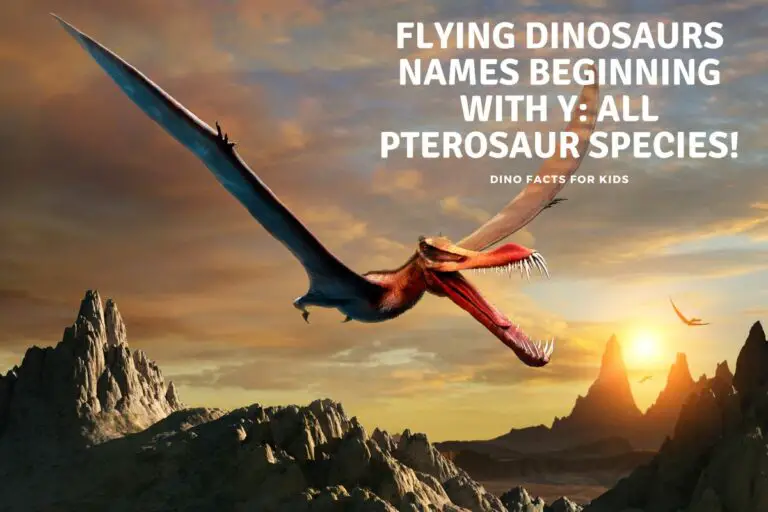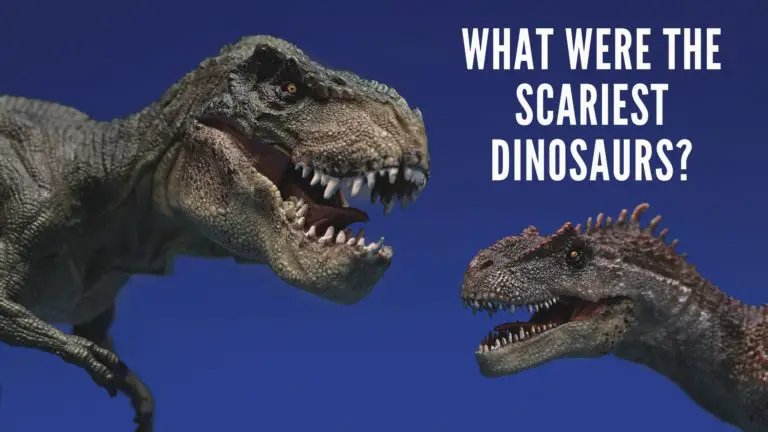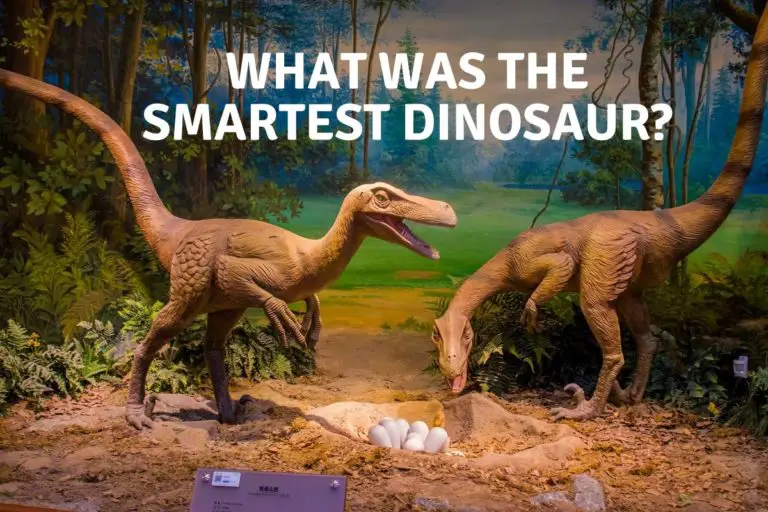Dinosaur Facts For Kids
Welcome to our treasure trove of Dinosaur Facts! Whether you’re a budding paleontologist, an ardent dino enthusiast, or simply curious about these incredible creatures that once ruled our planet, you’re in the right place.
Here we have 101 of our favorite dinosaur facts that cover every type, size and age of dinosaurs. There is bound be something you can learn from these dinosaur facts and we save our favorite dinosaur fact for last!
From the mighty T-Rex to the intelligent Troodon, from the herbivorous giants to the feathered raptors, we’ve got them all covered.
You can check them out all of these 101 dinosaur facts below

101 Incredible Dinosaur facts
Dinosaur fact 1-20
1: Dinosaurs roamed the earth for about 165 million years, much longer than humans have existed.
2: The word “dinosaur” comes from the Greek language and means ‘terrible lizard’.
3: Dinosaurs are divided into two groups by the structure of their hip bones – Saurischia, with lizard-like hips, and Ornithischia, with bird-like hips.
4: The largest dinosaur ever discovered is Argentinosaurus, which measured over 35 meters (115 feet) long and may have weighed up to 100 tons.
5: The smallest dinosaur ever discovered is often debated and we have an article that covers it here on the site, currently it is though to be the the raven sized Parvicursor which was thought to be around 12-15 inches long.
6: Some dinosaurs, like the Velociraptor, had plenty of feathers, while others, like Triceratops, had skin more like a rhinoceros and few if any feathers.
7: Dinosaurs didn’t chew their food. They had to swallow it whole or in large chunks.
8: The T-Rex, one of the largest meat-eating dinosaurs, had teeth that were up to 12 inches long. Though very big the prehistoric whale Livyatan had even longer teeth!
9: Many dinosaurs, like Stegosaurus, had brain sizes comparable to today’s birds or reptiles, even though their bodies were much larger.
10: some dinosaurs, like the Maiasaura, are known to have cared for their young, much like birds do today, although so far this seems a rare behavior.
11: The Oviraptor, whose name means ‘egg thief’, was originally thought to steal and eat other dinosaur’s eggs, but we now know it was a caring parent that protected its own eggs.
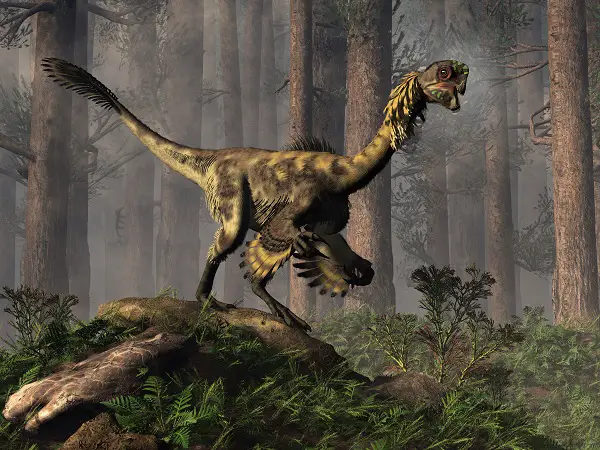
12: The Ankylosaurus had a large club at the end of its tail which it could use to defend itself against predators.
13: Spinosaurus is the longest carnivorous dinosaur ever discovered, even larger than T-Rex and Giganotosaurus.
14: There are thought to be over 1000 dinosaurs species discovered so far! with plenty more left to discover!
15: Some dinosaurs, like the Parasaurolophus, had elaborate crests on their heads that may have been used to produce sound.
16: Herbivorous dinosaurs like Diplodocus had to eat hundreds of pounds of plants every day to sustain their enormous size.
17: The Iguanodon was one of the first dinosaurs ever discovered and recognized. It was named for its similar teeth to iguanas, but it was much bigger!
18: The dinosaur with the thickest skin was the Ankylosaurus. Its skin was so tough and thickly armored that even a T-Rex bite may not have been able to penetrate it.
19: The fastest dinosaurs were probably the ostrich mimic ornithomimids, such as Gallimimus and Struthiomimus. They could likely run at speeds of up to 60 kilometers per hour (37 mph).
20: The heaviest dinosaur was probably Argentinosaurus at 77 tonnes. It was the equivalent of 17 African Elephants.
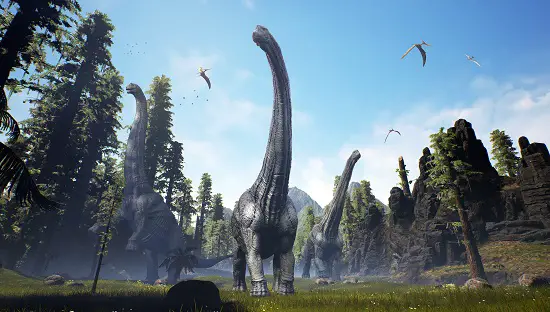
Dinosaurs facts 21-40
21: Dinosaurs are believed to have gone extinct about 65 million years ago due to a massive asteroid impact.
22: Some dinosaurs are known to have lived in herds, like the duck-billed Hadrosaurus and ceratopsians like Nasauceratops
23: Some dinosaurs could replace their teeth very quickly. For instance, a T-Rex could grow back a new tooth in under a year if one was broken or lost.
24: Despite their massive size, most dinosaurs, especially the meat-eaters, were probably quite agile.
25: Birds are the closest living relatives to theropod dinosaurs, like the T-Rex and Velociraptor, remember that next time you eat chicken!
26: A dinosaur’s lifespan varied greatly. Some may have lived to be over 100 years old, while others had much shorter lifespans.
27: Dinosaur eggs came in all shapes and sizes. Some were as small as a tennis ball, while others were the size of a basketball.
28: The Stegosaurus had tail spikes that were up to 4 feet long and could swing them as a defensive weapon.
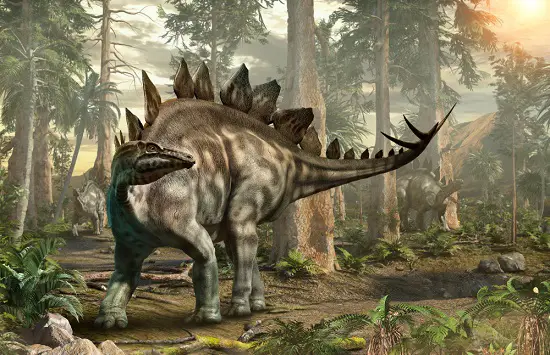
29: Dinosaurs likely had a great sense of smell. The T-Rex, in particular, is thought to have had a highly developed olfactory region in its brain.
30: The Troodon is considered one of the smartest dinosaurs because it had a large brain relative to its body size.
31: The meat-eating dinosaur Giganotosaurus was possibly larger than the T-Rex, but its brain was only about the size of a banana.
32: Therizinosaurus, a bizarre dinosaur, had the longest claws of any known animal, reaching up to 1 meter (3.3 feet) in length.
33: The Apatosaurus, formerly known as the Brontosaurus, had a neck that was up to 6.5 meters (21 feet) long.
34: The Pachycephalosaurus had a dome-shaped skull up to 10 inches thick. It might have used its thick head to head-butt rivals and display colors
35: The Jurassic Park movies introduced the concept of creating dinosaurs from preserved DNA in amber, but in reality, DNA degrades too quickly for this to be possible.
36: Some dinosaurs were bipedal (walked on two legs) while others were quadrupedal (walked on four legs). Some dinosaurs, like the hadrosaur family ( duck billed dinosaurs) could probably do both.
37: The colors of most dinosaurs are mostly unknown because skin does not fossilize very often however research on some dinosaurs has given us some ideas. you can read more on our what color were dinosaurs page.
38: Paleontologists, the scientists who study dinosaurs, often use tiny brushes and tools to carefully uncover dinosaur fossils without damaging them.
39: The Abelisaurus was a carnivorous dinosaur that lived during the late Cretaceous period, about 75 million years ago. It was likely a fast, agile predator.
40: Even though there is a great number of dinosaur species that existed, it is still thought that they all dinosaurs laid eggs. as although proof has not been found for every species, it is very common among all types of dinosaurs.
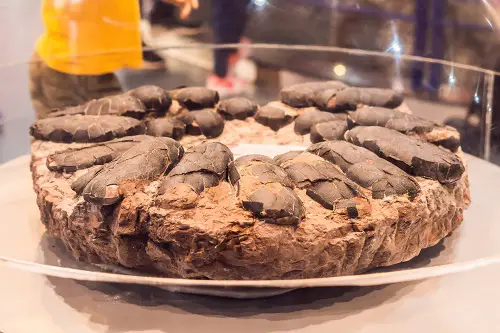
Dinosaur facts 41-60
41: Some dinosaurs, like the Anzu wyliei, were omnivorous, eating both plants and meat.
42: The Baryonyx was a dinosaur that could hunt on both land and water,
43: The dinosaur with the longest name is Micropachycephalosaurus, which means “tiny thick-headed lizard.
44: The oldest known dinosaur is the Nyasasaurus , that lived 243 million years ago. for a long time it was thought to be Eoraptor that was a meat eater than lived 231 million years ago.
45: The Velociraptors were actually much smaller than they’re depicted in popular culture, like the “Jurassic Park” movies. They were about the size of a turkey.
46: Sauropod dinosaurs like Brachiosaurus, and Argentinosaurus were some of the tallest animals to ever walk the earth.
47: Carnotaurus, a meat-eating dinosaur, had some of the smallest arms of any dinosaur, even shorter than T-Rex’s arms! you can see this in Prehistoric planet 1
48: The Dilophosaurus, which lived during the early Jurassic period, had two crests on its head, and contrary to popular movies, there’s no evidence it spat venom.
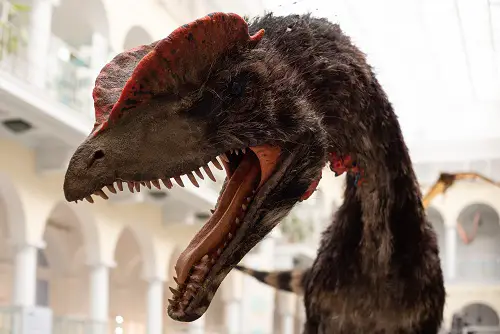
49: The Othnielia is named after Othniel Charles Marsh, a 19th-century paleontologist who discovered many dinosaur fossils.
50: The Liaoning Province in China is one of the best places to find feathered dinosaur fossils. This is where the first evidence of feathered dinosaurs was discovered.
51: The dinosaur with the shortest name is the Yi Qi, its name means strange wing.
52: The most famous dinosaur in movies is probably the Tyrannosaurus Rex, appearing in numerous films including the Jurassic Park and Jurassic World franchises.
53: Many dinosaur names are hard to pronounce because they come from Greek or Latin roots. For example, “Tyrannosaurus” means “tyrant lizard” and “Triceratops” means “three-horned face”.
54: People are often fascinated by dinosaurs because they represent a completely different world from the one we live in.
55: Even though dinosaurs are extinct, studying them can help scientists understand more about our own place in the history of life on Earth.
56: Dinosaurs have been discovered on every continent, including Antarctica.
57: The first dinosaur to be named was Megalosaurus in 1824.
58: The largest dinosaur eggs ever discovered were about the size of a football.
59: The Jurassic Park movies depicted the Velociraptor as about the size of a human, but in reality, they were about the size of a large turkey.
60: The dinosaur with the longest tail was the Diplodocus, which could have a tail up to 46 feet long.
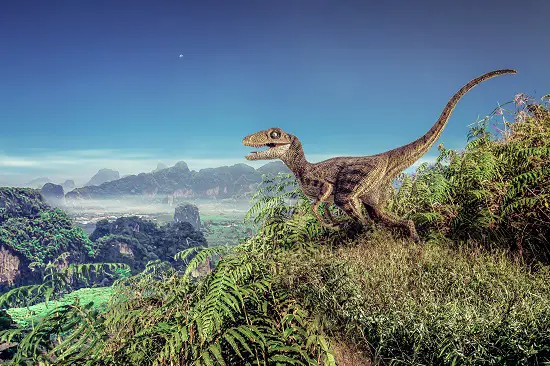
Dinosaur facts 61-80
61: Some dinosaurs, like the Deinocheirus, are known only from a few bones. In the case of Deinocheirus, for many years, only its giant arms were discovered.
62: Dinosaur fossils have been found with preserved footprints and even skin impressions, giving us a glimpse into their lives.
63: Some dinosaurs, like the herbivorous Sauroposeidon, could reach up to heights of 18 meters (59 feet), taller than a six-story building!
64: The first nearly-complete dinosaur skeleton discovered was of an Iguanodon in 1878.
65: The Spinosaurus is thought to be to have been semi-aquatic, as it likely spent much of its time in water.
66: The T-Rex could bite down with a force of about 8,000 pounds, equivalent to the weight of three small cars.
67: Even though movies often show dinosaurs roaring, scientists think it’s more likely they made sounds similar to birds, such as hooting, chirping, or squawking.
68: Some dinosaurs, like the Protoceratops, had frills on their heads, which might have been used for display to attract mates or intimidate rivals.
67: The Compsognathus is one of the smallest dinosaurs known to exist, roughly the size of a chicken.
68: Some dinosaurs, like the Anzu wyliei, are nicknamed “the chicken from hell” because of their bird-like features.
69: The “fighting dinosaurs” fossil shows a Velociraptor and Protoceratops locked in combat, giving us a glimpse into dinosaur behavior.
70: The “good mother lizard” or Maiasaura, was named so because fossils of its nest were found, showing that the dinosaur cared for its young.
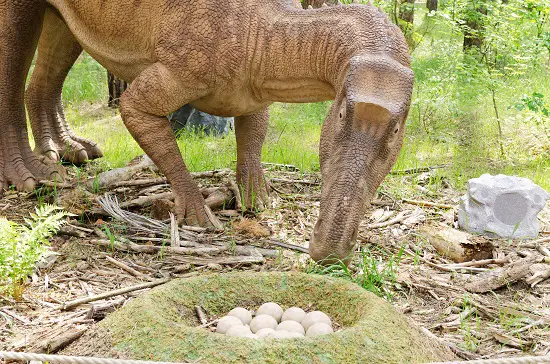
71: Dinosaurs are known for their massive size, but many dinosaurs were actually quite small. Some were no bigger than a modern-day chicken!
72: Dinosaurs have appeared in literature for many years, but it wasn’t until Arthur Conan Doyle’s book “The Lost World” in 1912 that they truly entered popular culture.
73: Dinosaurs lived during a period of the earth’s history when the continents were all part of one giant landmass called Pangaea.
74: The Jurassic Period, made famous by the Jurassic Park movies, was actually the second of three periods in which dinosaurs lived, between the Triassic and Cretaceous periods.
75: The Yutyrannus, a relative of the T-Rex, is the largest dinosaur known to have been completely covered in feathers.
76: Pachycephalosaurus, known for its thick skull, is often thought to have used its head to ram into rivals, much like modern-day rams, but some scientists think it’s more likely they used their skulls for display or for flank-butting.
77: While we often think of dinosaurs as reptiles, birds are technically dinosaurs, making dinosaurs the only group of prehistoric reptiles that are not extinct.
78: The T-Rex had a stride of up to 12 to 15 feet, which means it could cover a lot of ground quickly despite not being a particularly fast runner.
79: The Edmontosaurus, a herbivorous dinosaur, had a beak but no teeth in the front of its mouth, with teeth only in the sides and back.
80: Even though the Brontosaurus is one of the most famous dinosaurs, for many years, scientists thought it didn’t exist and was really an Apatosaurus. But in 2015, the Brontosaurus was officially recognized as a separate species again.

Dinosaur facts 81-100
82: Many dinosaurs, like the Bambiraptor, are named after cultural references. The Bambiraptor is named after the Disney character Bambi because the dinosaur was a young, small individual when it was found.
83: Even though all non-avian dinosaurs went extinct about 65 million years ago, many of their distant relatives still exist today, like crocodiles and birds.
85: The Camarasaurus is known for having being one of the most complete set of dinosaur bones in the fossil record.
86: The Amargasaurus was a sauropod with tall, sharp spines down its neck and back, which may have been used for display or defense although these are sometimes thought to be a sail as well.
87: The T-Rex’s closest living relatives may be chickens and ostriches.
88: The first dinosaur discovered in North America was the Hadrosaurus, which was found in 1858 in Haddonfield, New Jersey.
89: The Allosaurus, a large carnivorous dinosaur, is Utah’s state fossil and its state dinosaur is the Utahraptor.
90: The Carcharodontosaurus, whose name means “shark-toothed lizard”, had teeth that were up to 8 inches long.
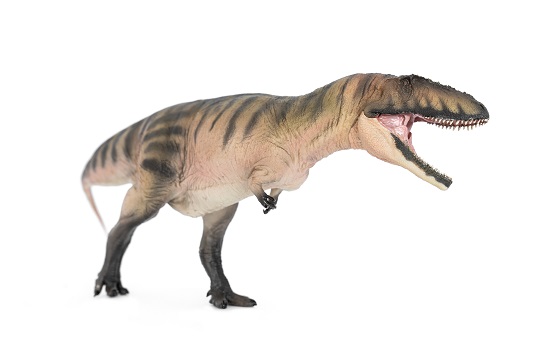
91: Many movies and cartoons often portray dinosaurs as green or brown, but scientists now believe they could have had bright, colorful patterns.
92: While the T-Rex is famous for its small arms, they were actually very strong and may have been used to hold on to prey.
93: Dinosaur tracks, known as ichnofossils, can tell us a lot about how dinosaurs moved and behaved.
95: Some herbivorous dinosaurs, like the Triceratops, could probably defend themselves pretty well against predators with their sharp horns and frilled head armor.
96: The dinosaur era, known as the Mesozoic era, is divided into three periods: the Triassic, Jurassic, and Cretaceous.
97: The Gastonia, a herbivorous dinosaur, had body armor to protect itself from predators.
98: The Nodosaurus is a type of armored dinosaur known from an incredibly well-preserved fossil that even shows its skin texture.
99: Sauropods, the group that includes the largest dinosaurs, started out as small, bipedal dinosaurs.
100: One of the earliest birds, Archaeopteryx, had feathers and wings but also dinosaur-like features such as a long, bony tail and teeth.
101: There are still many dinosaur species waiting to be discovered. Scientists estimate we’ve only found about a quarter of all the dinosaur species that ever lived.
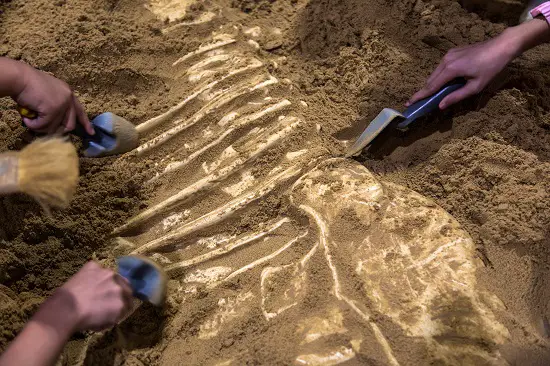
We also have two pages on Pterosaur / Flying Reptile Facts and Marine Reptiles like Mosasaurus and Kronosaurus which while living at the same time were not dinosaurs! You can check out these on the links below.
- 59 Flying Dinosaur Facts: The pterosaur Facts
- 51 Swimming Dinosaur Facts: Prehistoric Marine Reptile facts
Conclusion
We have to admit that although we have thousands of dinosaur facts on the site, and even the site its self is called Dinosaur facts for kids! We didn’t do an article on general dinosaur facts!
We have individual dinosaur fact pages, which you can access all over the site but not one that covers some of the coolest dinosaur facts! So here it is and we hope you leant something new about the fabulous world of dinosaurs!
References
- https://dinosaurfactsforkids.com/
- https://www.thedinosaurmuseum.com/dino-facts
- https://www.morereptiles.com/dinosaur-facts/
- https://www.amnh.org/dinosaurs/dinosaur-facts
- https://www.factretriever.com/dinosaur-facts
- https://www.nationalgeographic.co.uk/science-and-technology/2022/04/10-dinosaur-facts-that-will-blow-your-kids-mind
- https://artsandculture.google.com/story/7-awesome-facts-about-dinosaurs/EgJyqO9Lp8GJJw
Hi, I am Roy Ford a General Studies and English Teacher who has taught all over the world. What started as a fossil collection became a great way to teach, motivate and inspire students of all ages and all over the world about dinosaurs and from that and children’s love of dinosaurs came the site dinosaur facts for kids, a resource for all ages.

